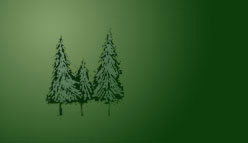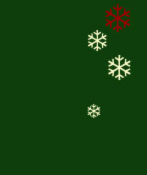|
Stance
Nocking the arrow
Hand position
Pre-draw preparation
Drawing the bow
The reference point
Holding and aiming
The Loose
Follow through
Relaxing
You will need to remember all of the ten stages
of shooting in the long bow and blend them into your style in a continuous and smooth action. Its a lot to remember all at
once, but with practice it will become natural and you wont have to think about it!
As with all new skills, it is
best to learn correctly under the guidance of a qualified archery coach. The coach can help you learn the correct body positions
and actions required, and provide advice when modifications are required to suit the individual. As every person is not exactly
the same in body shape, the advice, may have to be modified to suit. This is where the Coach is best able to help the individual.
If there are any terms you don't understand consult the GLOSSARY
1. Stance
The archer stands upright in a comfortable, relaxed position with one
foot each side of the shooting line. The feet should be about shoulder width apart with an even amount of weight taken on
each foot and an even amount of weight between the ball and heel of each foot. This will maintain balance and help keep the
body steady. During the shooting sequence, the body position must remain as steady as possible with no shifting of weight
or leaning of the body. If there is a problem with bowstring clearance to the arm, then an open stance may be required. Once
the stance position has been established, then it must be consistent from shot to shot.
A common mistake of archers
who have learnt to shoot a recurve or other sighted bow is to align their body with the target rather than the point of aim
of their arrow. As a result the body is twisted to the point of aim and when the arrow is loosed, their body spins back.
2.
Nocking the Arrow
Nock the arrow by placing the nock of the arrow onto the bowstring between the nocking
points. Make sure that the cock fletching on the arrow is facing towards you and the nock is pushed firmly onto the bowstring.
The arrow shaft is placed on the top finger of your bow hand.
3. Drawing Hand and Bow Hand
Only
the index, second and third fingers are used. All longbows should be shot using the mediterranean loose. The index finger
is placed above the arrow nock and the second and third fingers are placed below the arrow nock. Curl the fingers around the
bowstring so that the first joint of all three fingers are aligned on the bowstring. Keep a space clear between the index
and second fingers and the arrow nock, so the fingers do not touch the nock. (This will prevent 'pinching' of the arrow which
causes it to rise off your bow hand.) Keep the back of the hand relaxed and as flat as possible. The thumb is tucked into
the palm so it can be placed against the neck at full draw. Place a slight pull on the bowstring to set the fingers in position
ready for the draw. During the draw maintain an even amount of pressure on all three fingers.
Place the bow hand into
the handle (grip) of the bow with the centreline of the vee between thumb and index finger in line with the centre of the
bow. The base of the thumb muscle should rest on the centreline of the grip. During the draw, the pressure should be taken
on the thumb muscle and directly into the wrist. (Low wrist position.) The thumb and fingers should remain relaxed with the
tips of the fingers curled around until lightly touching the bow. This will stop the bow falling out of the hand on release.
A consistent hand position on the bow grip is necessary. It is a good idea to get into the habit of not shifting your grip
of the bow until you have shot all three arrows.
4. Pre-draw preparation
Push out with the
bow arm to set the hand position on the handle (avoiding locking the elbow completely straight), then raise the bow arm and
drawing arm together, up until the bow arm is parallel with the ground. Keep the front shoulder in its normal low position.
(The shoulder must not be allowed to rotate up or back as this shortens the draw length.) Keep the elbow of the drawing arm
shoulder high, as this will help bring into action the back muscles needed to draw the bow to full draw.
As the string
is drawn back a preliminary aim should be made. Before drawing back, check that the string is aligned with the centre of the
bow and that the arrow point is aimed at the point at which you are aiming. (As the bowstring is just in front of the eye,
it will appear blurred.) When the bow is held in the vertical position, then the bowstring and edge of the bow will be parallel.
5. Drawing the Bow
From the pre-draw position, use the back muscles to pull the elbow of
the drawing arm backwards in one smooth motion until the drawing hand is placed against the jaw. The position of the head
and body should not move. (Pull the bowstring to the face, not move the face to meet the bowstring.) An equal amount of push
on the bow hand and pull on the drawing hand will keep the body balanced.
6. The Reference point
The Reference Point is where the hand is positioned on the jaw and the bowstring touches the face. It is vitally important
that the index finger is firmly placed against the jaw, the thumb is tucked into the palm of the hand so it can be placed
firmly against the neck and the bowstring is firmly touching the chin (and nose, if possible.) The relationship between all
these positions is important so it is vital that it be as consistent as possible. It also acts as a consistent draw length
position. Any variation in the position will effect the amount of force the bow will impart to the arrow.
7.
Holding and Aiming
Holding is where the tension is maintained in the back muscles and a final check is made
that the arrow is aimed. For many longbow archers this is a fleeting moment. If you have a perfectly matched bow and arrow
the tip of the arrow will be in line with the centre of the target but the point of aim may be above or below the target,
depending on the point of aim. If you have any doubts about your aim or if any part of body feels out of place, then it is
best to stop now, let the bowstring down and re-start again, rather than make a bad shot.
If you cannot aim the tip
of the arrow on the centre of the target (point blank) it is best to select a point to aim at. In windy conditions this could
be a point on the next target! It is permissible to put a small marker on the ground and aim the arrow tip at that. Alternatively,
many archers use a rubber ring ( a plumbing O ring is good) on the bow. This can be moved up and down depending on the distance
to be shot. Right-hand archers align the left-hand side of the bow and the ring level with the target, ideally the gold but
maybe the edge of the boss level with the gold.
8. The Loose
The loose or release of the
bowstring is the most critical step in the sequence. If it is not done correctly, then all the effort in the previous steps
is cancelled out. To loose the arrow correctly, the fingers holding the bowstring must allow the string to slip off the fingers.
All three fingers must release at the same time. This will let the bowstring pull away from the fingers with the least amount
of deflection. When the release is done correctly, the hand should move backwards, as the back muscles will pull the arm backwards
and the fingers should come to rest beside the neck.
Some long bow archers use a dead-loose. The finger muscles are
flexed open to release the bowstring. However, the hand will usually come to rest about 5cm away from the neck. Flexing the
finger muscles will deflect the bowstring sideways and the arrows will have a horizontal spread across the target
9.
Follow Through
The Follow Through is maintaining the position of the bow arm on release until the arrow hits
the target. As the arrow slides along the bow hand any movement of the bow will deflect the arrow. The position of the head
and body should remain steady, while the drawing hand moves backwards after the release. It is important to not let the bow
arm fall after the release, as this can become a problem when the bow arm actually starts to fall on the release, making some
arrows land low on the target. The longbow arrow moves more slowly than a recurve or compound arrow so there is more time
for the arrow to be deflected.
10. Relaxing
The archer must relax after each shot to allow
the muscles to recover from their effort. About 20 to 30 seconds should be enough time for the muscles to recharge, ready
for the next shot. If not enough time is allowed between shots, then the muscles will tire rapidly and may even become sore.
Tired muscles will not be able to perform consistently. But remember the advantage of maintaining the grip between looses.
Thanks to Centenary Archers in Australia for their guide written by Graeme Jeffrey from which this
has been adapted for longbow.
Last revised May 2004
GLOSSARY
|




